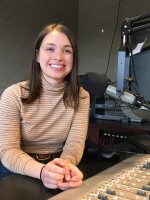Park City Municipal’s Vision 2020 process has revealed what many community members fear the city’s fate will be: “Amusement Park City,” a town where visitors continue to outnumber residents, and the city is overwhelmed by the impact. Some resort communities are trying to move forward in a way that supports the tourism economy but also makes residents feel heard.
Given the term, sustainable tourism could have something to do with reducing waste or switching to renewable energy, but Park City Mayor Andy Beerman says it’s an emerging concept.
“The short version is it's achieving a balance between tourists and locals, figuring out how you can survive as a resort town and thrive but not be overrun by tourism,” Beerman said.
The phrase conjures to mind a handful of issues commonly associated with tourism—traffic congestion, a lack of available and affordable housing, high costs of living.
Beerman went before the state legislature this summer, along with other Utah communities that rely on tourism, to make state leaders aware of issues they face. Beerman says the problem comes down to a small, 8,000-resident town like Park City having to accommodate tens of thousands of visitors. On a state level, Beerman wants policymakers to focus on quality over quantity.
“We need to figure out how we disperse the tourists between our various attractions statewide," Beerman said. "How we build transit systems, so we have less cars; how we manage folks at our ski resorts and at our national parks in a way that they have a quality experience; and how we allow neighborhoods—residential areas, in particular—to zone and protect themselves in the ways that are needed.”
With last year’s record number of skier days, Park City-area ski resorts are a huge draw for tourists. Beerman says it’s tricky to get the resorts on board with sustainable tourism, as their business model centers around high volume of guests and high costs. Still, Beerman says the city wants to collaborate with the resorts on creating a better experience for residents.
“We would love them to continue to work with us on pushing their guests onto transit, and I think, ultimately, paid parking in their parking lots is going to help on that front," Beerman said. "Where they house their employees is important, too. We would love to see more of those employees housed closer to the bases, to reduce traffic and pressure on our community, but I think they can also play a key role in how they educate their guests and their users how to better integrate with our community.”
Beerman says resort communities in Colorado and the Colorado State Office of Tourism have come together to educate visitors about reducing their impact on Colorado resources. The Tourism Office even created a strategic plan to drive traveler spending through promotion and development of sustainable experiences.
“You're seeing communities fight back and do things like cancel their Fourth of July fireworks because they don't want all the tourists coming to their town—they want to be able to enjoy it themselves," Beerman said. "So the State Office of Tourism decided to be proactive and say, we're going to respond to this by addressing it on a state level, and they're working with all the individual chambers [of commerce]. I would love to see that happen with our office of tourism. I'd also like to see our local chamber continue to address this.”
While the city considers tools to relieve the impacts of Park City’s tourism economy, Beerman asks residents to set realistic expectations, keeping in mind that they live other people’s vacations.
“Certainly, it's not fair for our tourists to overrun our community," Beerman said. "But our community also has to have a measure of tolerance and patience that that is what drives our economy, and it's a relatively clean driver—it's not like we've got factories and industry that impact our town. So coming to grips with those impacts and figuring out how we can best mitigate those; being proactive as opposed to just ruing the fact they exist is a better approach.”
As part of its 2020 visioning process, Park City Municipal hosted a focus group on sustainable tourism in November. Sustainable tourism is one of six “strategic pillars” of Park City’s evolving visioning plan. The strategic pillars are factors that will help Park City move away from its expected outcome, “Amusement Park City,” and instead achieve its preferred future: “Embracing Bold Change.”




